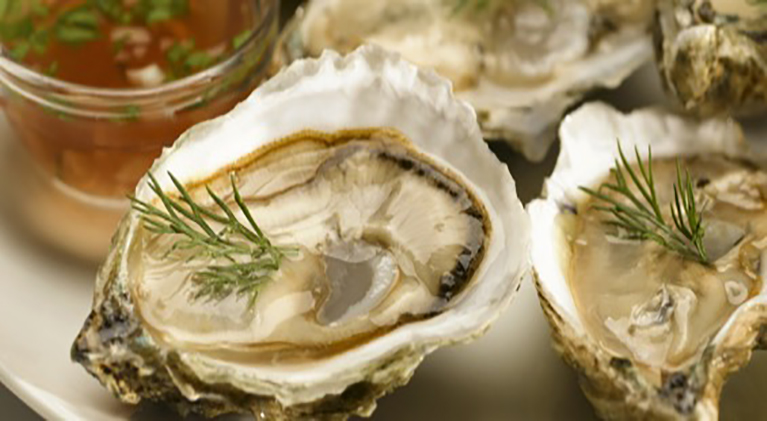Now that the summer months are behind us, we can feel a little more comfortable about ordering that platter of oysters on the half shell at our favorite seafood restaurant or oyster bar. The old adage that admonishes us to avoid raw oysters in months that don’t have an “R” means in September we can break out the saltines, lemons, and hot sauce.
But where did that old maxim originate?
Vibrosis causes an estimated 80,000 illnesses and 100 deaths in the United States every year!
When ocean waters like the Gulf of Mexico warm up in the summer months (those months without “R”s), the marine bacteria Vibrio starts multiplying, increasing the chance that they’ll make their way into our favorite seafood. Since oysters are filter feeders, the bacteria can concentrate in their tissues. And, Vibrosis causes an estimated 80,000 illnesses and 100 deaths in the United States every year. And, now that our oceans are staying warmer longer, someone may have to write a new maxim to advise our seafood selections.
Fortunately, there are a couple of methods to make sure a round of bad oysters don’t ruin your meal.
Cooking the oysters kills the Vibrio and can result in a dish as delicious as Oysters Rockefeller or an oyster Po’ Boy. But that still doesn’t satisfy your raw bar need.
If you still want your oysters raw, some seafood companies have adopted high pressure processing (HPP) as a way to eliminate the threat of Vibrio without cooking the oyster. The oysters are banded (to keep the shell together and hold in the oyster liquor) and subjected to intense pressure for a prescribed measure of time, which eliminates Vibrio and other potential pathogens. Plus the oysters become easier to shuck and have an extended shelf life, meaning you can find them in landlocked places like Kansas and Colorado!
Check out our website to learn more about the seafood applications of HPP.Now that the summer months are behind us, we can feel a little more comfortable about ordering that platter of oysters on the half shell at our favorite seafood restaurant or oyster bar. The old adage that admonishes us to avoid raw oysters in months that don’t have an “R” means in September we can break out the saltines, lemons, and hot sauce.
But where did that old maxim originate?
Vibrosis causes an estimated 80,000 illnesses and 100 deaths in the United States every year!
When ocean waters like the Gulf of Mexico warm up in the summer months (those months without “R”s), the marine bacteria Vibrio starts multiplying, increasing the chance that they’ll make their way into our favorite seafood. Since oysters are filter feeders, the bacteria can concentrate in their tissues. And, Vibrosis causes an estimated 80,000 illnesses and 100 deaths in the United States every year. And, now that our oceans are staying warmer longer, someone may have to write a new maxim to advise our seafood selections.
Fortunately, there are a couple of methods to make sure a round of bad oysters don’t ruin your meal.
Cooking the oysters kills the Vibrio and can result in a dish as delicious as Oysters Rockefeller or an oyster Po’ Boy. But that still doesn’t satisfy your raw bar need.
If you still want your oysters raw, some seafood companies have adopted high pressure processing (HPP) as a way to eliminate the threat of Vibrio without cooking the oyster. The oysters are banded (to keep the shell together and hold in the oyster liquor) and subjected to intense pressure for a prescribed measure of time, which eliminates Vibrio and other potential pathogens. Plus the oysters become easier to shuck and have an extended shelf life, meaning you can find them in landlocked places like Kansas and Colorado!
Check out our website to learn more about the seafood applications of HPP.

